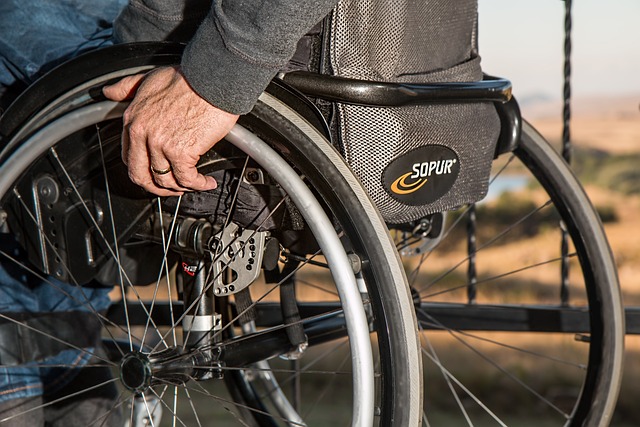Learn About Handicap Van Prices & Key Features in 2025
Handicap vans provide essential mobility solutions for individuals with disabilities and seniors with limited mobility. As we look toward 2025, these specialized vehicles continue to evolve with advanced accessibility features, improved designs, and varying price points. Understanding the current market, available options, and cost considerations can help families make informed decisions when investing in these life-changing vehicles.

Handicap vans, also known as wheelchair-accessible vehicles or mobility vans, serve as crucial transportation solutions for individuals with mobility challenges. These specially modified vehicles allow wheelchair users to travel comfortably and independently. As we approach 2025, the market offers various models with diverse features and price ranges. This comprehensive guide explores everything you need to know about handicap van options, pricing structures, and essential features to consider when making this significant investment.
What are Handicap Vans?
Handicap vans are vehicles specifically modified to accommodate wheelchair users and individuals with mobility limitations. These modifications typically include lowered floors, raised roofs, wheelchair ramps or lifts, and specialized seating arrangements. There are two primary types of handicap vans: side-entry and rear-entry. Side-entry vans feature a ramp or lift on the passenger side, allowing wheelchair users to access the front passenger area or middle row. Rear-entry vans have the ramp or lift at the back, providing access to the middle or rear seating areas. Each configuration offers different advantages depending on the user’s specific needs, parking situations, and intended use.
Handicap Van Prices in 2025
The cost of handicap vans in 2025 varies significantly based on several factors, including the vehicle model, conversion type, features, and whether purchasing new or used. New handicap vans typically range from $40,000 to $80,000, with high-end models reaching up to $100,000 or more. Factory-direct conversions from manufacturers like BraunAbility, VMI, and AMS Vans generally command premium prices due to their comprehensive warranties and certified quality.
Used handicap vans offer a more budget-friendly alternative, with prices ranging from $20,000 to $50,000 depending on age, mileage, and condition. Many dealerships specializing in mobility vehicles offer certified pre-owned options with partial warranties. Additionally, some families may qualify for financial assistance through Medicare, Medicaid waiver programs, veterans’ benefits, or grants from nonprofit organizations that can help offset these costs.
| Handicap Van Type | Price Range (New) | Price Range (Used) |
|---|---|---|
| Minivan Conversion | $40,000-$65,000 | $20,000-$40,000 |
| Full-Size Van Conversion | $55,000-$80,000 | $30,000-$50,000 |
| Luxury/Premium Models | $70,000-$100,000+ | $40,000-$60,000 |
Prices, rates, or cost estimates mentioned in this article are based on the latest available information but may change over time. Independent research is advised before making financial decisions.
Handicap Van Key Features in 2025
The 2025 market offers an impressive array of features designed to enhance accessibility, comfort, and safety. Standard accessibility features include wheelchair ramps or lifts, which can be manual or power-operated. Ramps typically offer easier maintenance and lower costs, while lifts provide smoother entry for heavier wheelchairs. Interior modifications often include removable seating, wheelchair securement systems, and lowered floors to provide adequate headroom.
Modern handicap vans also incorporate advanced technology features such as voice-activated controls, remote-controlled entry systems, and digital monitoring for wheelchair securement. Safety innovations include backup cameras with enhanced viewing angles, blind-spot detection systems specifically calibrated for larger van dimensions, and emergency evacuation features. Many 2025 models also offer improved fuel efficiency or hybrid/electric options, addressing the traditionally higher fuel consumption of these larger vehicles.
Handicap Van Specs That Matter in 2025
When evaluating handicap vans, several technical specifications deserve careful consideration. Door height clearance is crucial, with most conversions providing 54-61 inches of vertical entry space. Interior dimensions should accommodate the specific wheelchair’s turning radius, typically requiring at least 30-36 inches of width for standard wheelchairs and more for larger power chairs. Weight capacity represents another vital specification, with most ramps rated to handle 600-800 pounds, while lifts can typically manage 800-1,000 pounds.
Driving controls are another important consideration for users who plan to operate the vehicle from their wheelchair. Options include hand controls, steering aids, and digital driving systems. The 2025 models feature improved transfer seats with smoother rotation mechanisms and enhanced durability. Additionally, many newer vans offer extended range in electric models, with some reaching 200-250 miles per charge, making them increasingly practical for daily use and longer trips.
Pros of Handicap Vans For Seniors
Handicap vans offer numerous advantages for seniors with mobility challenges. Independence stands as perhaps the most significant benefit, allowing older adults to maintain their social connections and attend medical appointments without constantly relying on others. The accessibility features eliminate the physically demanding process of transferring in and out of standard vehicles, reducing the risk of falls and injuries that commonly occur during these transitions.
Many seniors appreciate the dignity that comes with traveling in a purpose-built vehicle rather than using specialized transport services with fixed schedules. The spacious interiors accommodate medical equipment, companions, or caregivers while providing comfortable seating. Modern handicap vans also integrate with smart home systems, allowing seniors to prepare the vehicle before even leaving their homes. For families caring for seniors, these vans simplify the transportation process, reducing physical strain on caregivers and enhancing the overall quality of life for everyone involved.
Handicap vans represent a significant investment but provide essential mobility solutions for individuals with disabilities and seniors. When considering a purchase in 2025, carefully evaluate your specific needs, budget constraints, and the various features available across different models. Many dealerships specializing in mobility vehicles offer test drives and consultations to help determine the most appropriate solution. With proper research and consideration of the factors outlined in this guide, you can find a handicap van that provides years of reliable, accessible transportation.




